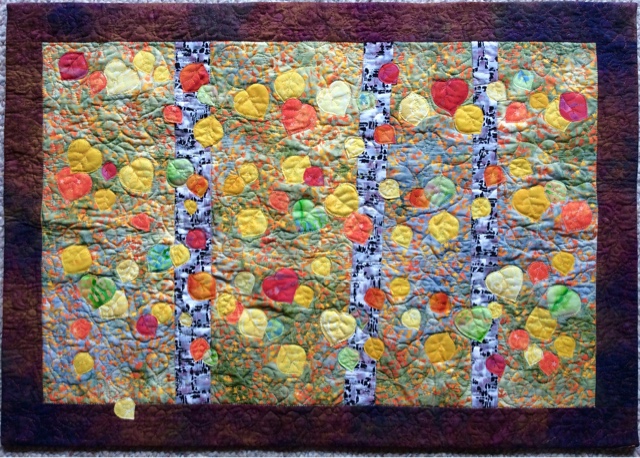I recently had a chance to visit the new
Textile Museum at the George Washington University. The
current exhibition is
Unraveling Identity: Our Textiles, Our Stories. This is a great exhibit that explores what we wear and what it says about us.
Among other things, it has a some wonderful Asian pieces, Mae West's shoes, and this fabulous piece,
Lady Walking a Tightrope, by artist Yinka Shonibare.
I think we're well aware that clothing has long been an indicator of social status; and it's still one of the keys most people look to, though the differences may be more subtle now. And using clothing to make a statement is also nothing new. The exhibition steers clear of a lot of the obvious US tropes--hippies, beatniks, cowboys, etc, and instead draws from its very large collection to show us things like Mae West's shoes, below.
It was apparently very important to Mae that she appear taller than she actually was (5 ft tall, according to Wikipedia), so she had these platform shoes built. The skin tone part on the top would be hidden by her long dress. They were part of a collection of shoes, very interesting!
I was particularly taken by this jacket, worn by a Buddhist pilgrim in Japan. The red inked markings are cinnebar stamps for each temple that the pilgrims received when they visited a site. The jacket was white at the beginning. So this is a version of the state map decals we used to put on the RV.
There's much, much more in the exhibit. It's the largest exhibition in the Museum's history, reflecting its new space. There's a huge central space that you descend to from the main entrance, down a great curving staircase. Docents were GWU students.
If you attend with someone who's not so into textiles, but does like history, there's separate exhibit about the history of Washington, DC, the
Civil War and the Making of Modern Washington, that entertained my husband while I poked around the textile exhibit, trying not to set off any alarms. (I tend to get close to the pieces without touching them, but sometimes it's too close!) My only complaint is that labels were hard to find for some of the pieces.
I visited the Textile Museum several times in its original location, and am very pleased that it has reopened in this new facility, though I do kind of miss the quaint old building it was in. From Wikipedia: "The museum was founded by collector George Hewitt Myers in 1925 and was originally housed in two historic buildings in D.C.'s Kalorama neighborhood: the Myers family home, designed by John Russell Pope, and an adjacent building designed by Waddy Wood. You'll still see pictures of the old buildings if you do a search on Google, so don't be confused.
Access was easy; we took the Metro and it was a short walk. There are restaurants in the area--make a day of it!
The museum is open:
Monday, Wednesday-Friday: 11:30 AM–6:30 PM
Saturday: 10 AM–5 PM
Sunday: 1–5 PM
Closed Tuesdays and university holidays.
Prefer to drive? Directions are
here.



